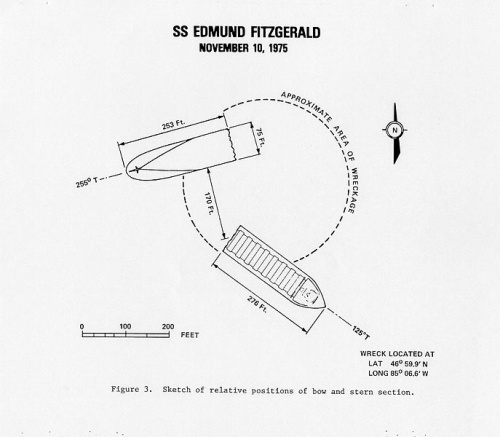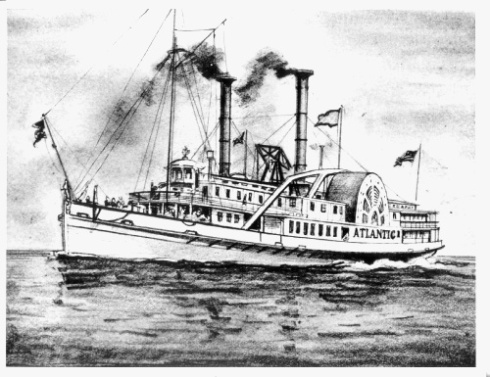
Construction continues on the new site, which should be up and running by the end of the week, although your friends aboard the Night Train aren’t making any promises.
One of the luxuries of writing about history, though, is that isn’t subject to the hyper-fast timeline that directs our daily lives. Taking a few days off the blog grind to learn code and play with my stylesheets puts a dent in my traffic stats, but I’m not worried about missing something on Twitter that won’t be relevant by the end of the day.
That isn’t to say that history doesn’t change. We revise it all the time; we change the stories we tell, how we tell them, the way the think about the characters involved. We build new monuments and memorials and tear down old ones. We fight about it. In Detroit, these fights are fever-pitch: the abandoned structures and empty lots that crowd the city are both monuments to a better past (one many Detroiters can personally remember) and painful memento mori of decline.
But there’s older, thicker history in the city that most of us forget after grade school. I like this mustier, more legendary stuff: the fur trade, the settlements, the berobed Jesuits and oak plank roads and war generals. I find it comforting. The past is tenacious, and we are strung to it.
So, scholarly asides aside: it was thus that we approached the tour itinerary provided in the 1933 edition of History of Detroit for Young People by Harriet and Florence Marsh. The original itinerary is bolded with our comments and photos below. Remember, watch for street car crossings and always have an older person with you.
I. THE CAMPUS MARTIUS
a. Find cannon from [Oliver Hazard] Perry’s victory.
No luck here. Does anyone know where this is? The Detroit Historical Society or the Dossin Great Lakes Museum, maybe? We saw some cannons on Washington Blvd., but they belonged to General Macomb, as it turned out.
b. Statues of Cadillac, N.E.corner; Father Marquette, N.W. corner; Father Richard, S.E. corner; La Salle, S.W. corner.
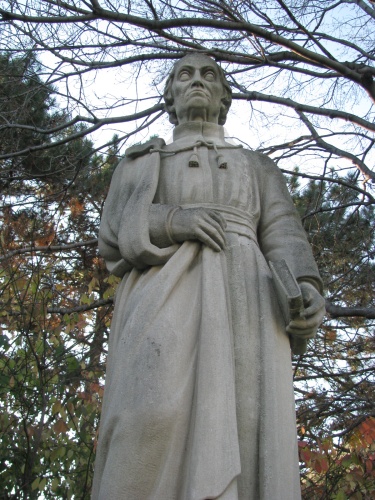
These are now on the campus of Wayne State University, in a park on Anthony Wayne Street. Father Richard’s aspect is especially haunting, and the Marshes speak lovingly of him, although they do mention that he was a plain, bespectacled man with a scar on his face from a sword wound. Not evident on the statue.
c. Council chamber. Look at picture presented to Detroit by French Government, “Louis XIV delivering to Chevalier de Cadillac the ordinance and grant for the foundation of the City of Detroit.”

Detroit City Hall was razed in 1961. I found this painting during a routine Google Book search, where it appeared on the cover of “Historical Collections” published by the Michigan Historical Society. The painting is credited as part of the “Art Musem of Detroit, 1902” — is it in the DIA now?
2. The Soldiers and Sailors Monument faces the City Hall on the east side of Woodward Avenue. This was designed by Randolph Rogers and unveiled in 1872.
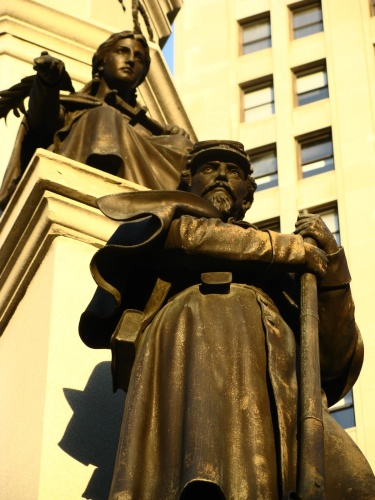 d
d
Standing triumphant.
3. Old Andrew’s Hotel, facing the Campus Martius, stood on the site of what now is the Schubert Detroit Opera House.
My dad speaks with a glint in his eye of Detroit’s movie house days, and he remembers the Schubert adoringly. The Schubert was demolished in 1964.
4. The fountain erected to the memory of Governor John J. Bagley stands on the north end of the campus.
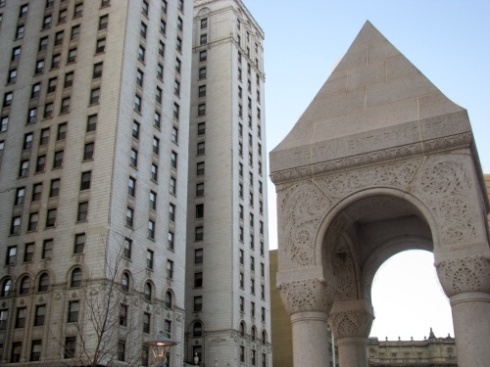
This odd, pyramidal marble structure still stands, although it’s pretty dry as fountains go. It’s got lions in the center. Rawr.
II. CADILLAC SQUARE
1. Detroit Historical Musem is on the 23rd floor of Barlum Tower, rooms 2302-18.
Not anymore!
2. The Wayne County Building is on the east side of the square.

The Wayne County Building may be the finest standing example of Roman Baroque architecture in North America, says Wikipedia (I have to trust the crowds on this one as I know nothing about architecture and the claim is unsourced), and it’s one of my favorite buildings in the city. We tried to get in to nose around, but the security guard, though evidently delighted to see another human being in the building, regrettably informed us that it was closed, and advised us to call his boss, who has “a big heart for people like you.” (Tourists? History dorks? White kids running around downtown with cameras?)
Mad Anthony has rapidly become an obsession and my boyfriend has obligingly been ordering out-of-print biographies of him through interlibrary loan. The Erie, PA-based Erie Brewing Company makes a delicious American Pale Ale in Mad Anthony’s name and we recommend it.
3. Cadillac Chair of Justice

Buildings of Detroit eloquently describes the fate of the Chair of Justice: “By the late 1930s, the limestone had started to fall apart, and the chair had turned into a favorite resting spot for vagrants and drunks. On Nov. 1, 1941, workers showed up with sledgehammers and it was removed in pieces.”
VI. Points West of Woodward Ave.
We skipped around on this tour, mapless, downtown and on foot as we were.
a. Statue of General Alexander Macomb, born in Detroit and at one time Commander-in-Chief of the Army. It stands on Washington Boulevard at Michigan Avenue, opposite the Book-Cadillac.
Impressive! The glorious Macomb still stands handsomely on Washington Boulevard opposite the still-standing (and gloriously restored and open for business!) Book-Cadillac Hotel. Fun fact: Macomb’s statue is made out of melted down cannons.

Also on Washington Boulevard is a statue of Casimir Pulaski.
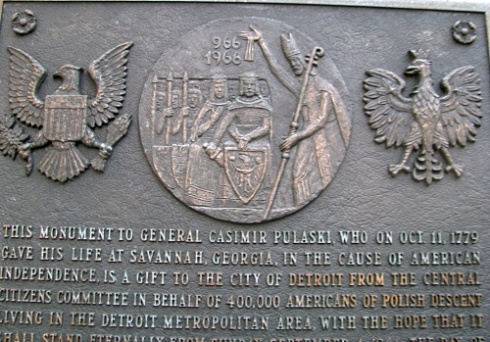
b. Mariner’s Church, northwest corner of Woodward Avenue and Woodbridge Street.

Old Mariner’s moved to Woodward and Jefferson in 1955.
h. Fort Shelby, originally Fort Lernoult, was located on what is now W. Fort Street from Griswold to Wayne streets. The Post Office is on this site.
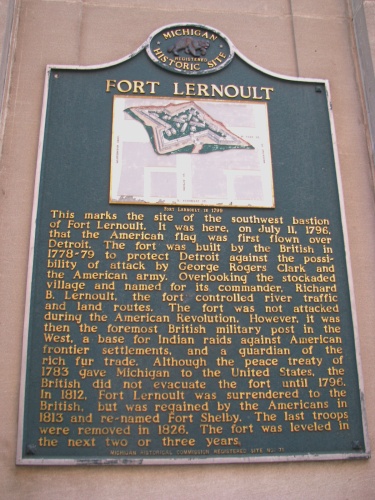
Not a Post Office anymore.
More to come!
By the late 1930s, the limestone had started to fall apart, and the chair had turned into a favorite resting spot for vagrants and drunks. On Nov. 1, 1941, workers showed up with sledgehammers and it was removed in pieces.
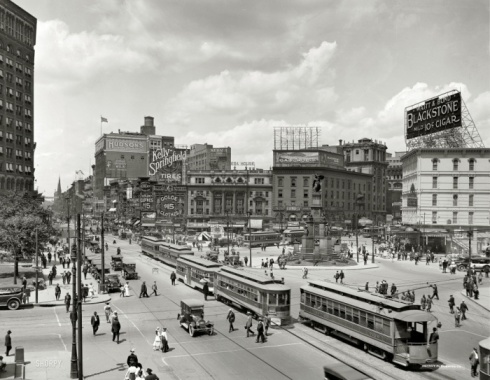

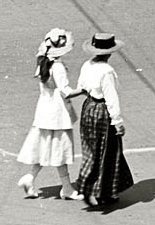
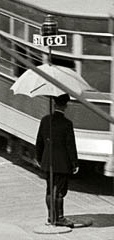




 d
d







